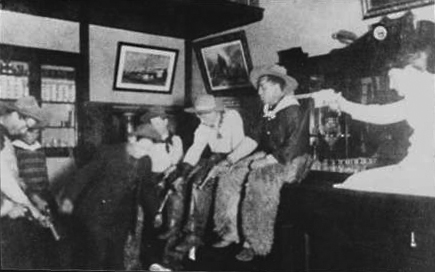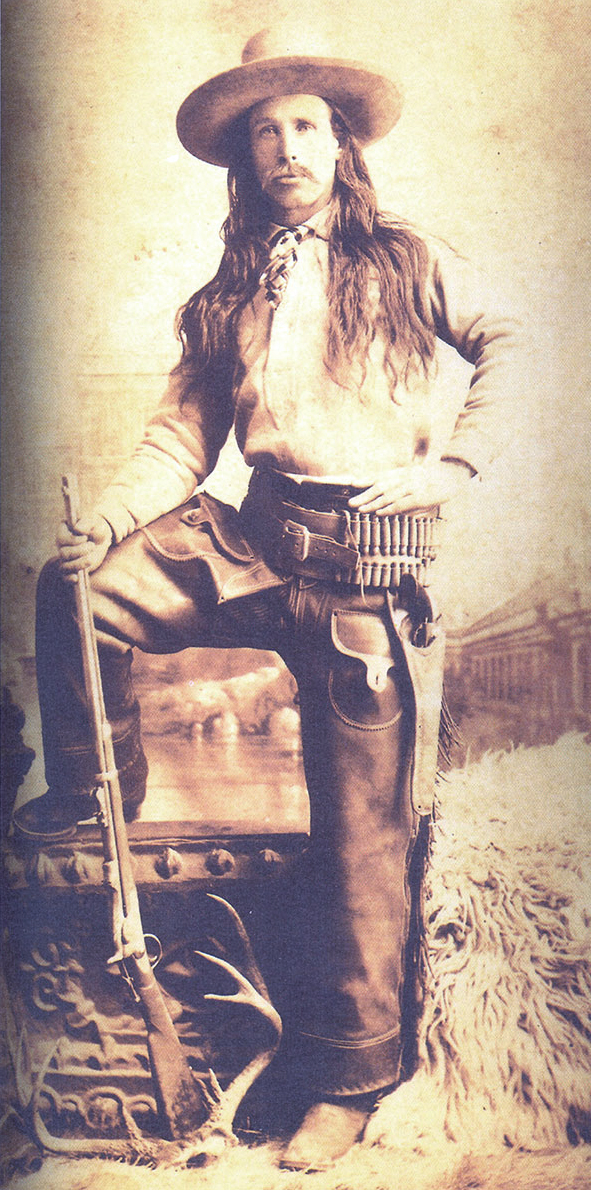Bucket Of Blood Street on:
[Wikipedia]
[Google]
[Amazon]

 Bucket of Blood Street is located off the former
Bucket of Blood Street is located off the former
 A newspaper account describes another event on January 19, 1896, when the proprietor of the saloon shot and killed two men playing cards: "Suddenly a dispute arose and angry words passed between them." The manager of the saloon, Harry Donnelly, used a revolver to force another man, George C. Hiatt, a barber, into the street and shot him "through the heart" in front of the town drug store. Donnelly was arrested by Deputy Sheriff Hofford who was acting as the county sheriff, as
A newspaper account describes another event on January 19, 1896, when the proprietor of the saloon shot and killed two men playing cards: "Suddenly a dispute arose and angry words passed between them." The manager of the saloon, Harry Donnelly, used a revolver to force another man, George C. Hiatt, a barber, into the street and shot him "through the heart" in front of the town drug store. Donnelly was arrested by Deputy Sheriff Hofford who was acting as the county sheriff, as
 The Bucket of Blood Saloon building is located on Bucket of Blood Street in the eastern parcel of the Henning Block of the South Central Avenue Commercial Historic District, which is on the
The Bucket of Blood Saloon building is located on Bucket of Blood Street in the eastern parcel of the Henning Block of the South Central Avenue Commercial Historic District, which is on the
George Hennessey (center), manager of the Bucket of Blood Saloon, 1908.jpg, George Hennessey (center), manager of the Bucket of Blood Saloon, outside the saloon in 1908
Hash Knife Outfit, Holbrook, AZ.jpg, Hashknife Outfit cowboys outside the Bucket of Blood Saloon, circa 1890
Holbrook-Building- Bucket of Blood Saloon-1888-1.jpg, Bucket of Blood Saloon building on Bucket of Blood Street
Holbrook-Building- Bucket of Blood Saloon-1888-2.jpg, Boarded up Bucket of Blood Saloon with sign
Holbrook-Building-Horsehead Crossing Deli and Ice Cream Parlor-1900.jpg, Horsehead Crossing Deli and Ice Cream Parlor at 112 Bucket of Blood Street
Holbrook-Building-Dusty River Antiques-1900.jpg, Dusty River Antiques and Grocery, 105 Bucket of Blood Street
Hashknife cowboys Holbrook Arizona circa 1900.jpg, Hashknife cowboys, Holbrook, Arizona, circa 1900

 Bucket of Blood Street is located off the former
Bucket of Blood Street is located off the former U.S. Route 66
U.S. Route 66 or U.S. Highway 66 (US 66 or Route 66) was one of the original highways in the United States Numbered Highway System. It was established on November 11, 1926, with road signs erected the following year. The h ...
in the Old Downtown district of Holbrook, Arizona
Holbrook ( nv, Tʼiisyaakin) is a city in Navajo County, Arizona, United States. According to the 2010 census, the population of the city was 5,053. The city is the county seat of Navajo County.
Holbrook was founded in 1881 or 1882, when the r ...
. Bucket of Blood Street is one block south of the historical Santa Fe Railroad
The Atchison, Topeka and Santa Fe Railway , often referred to as the Santa Fe or AT&SF, was one of the larger railroads in the United States. The railroad was chartered in February 1859 to serve the cities of Atchison and Topeka, Kansas, and S ...
station on Navajo Road that was built in 1882.
Holbrook was founded in the 1880s as a railroad stop. At the time, the desert town was mainly populated by ranchers, outlaws, cowboys and cattle rustlers, and was known for its gun fights. Holbrook had a reputation as a "town too tough for women and churches".
History
Terrell's Cottage Saloon had existed on the street for years before becoming known as Bucket of Blood Saloon, after two men died in a violent fight there. The saloon was popular with cowboys and ruffians; fistfights and gunfights often broke out there. The year 1886 was a particularly violent one, as the town lost about ten percent of its population. A fight broke out at the saloon during a card game between rival cattle rustlers, including wranglers from the Hashknife Outfit of the Aztec Land and Cattle Company. The result of the fight was described as though a bucket of blood had been spilled on the floor. A newspaper account describes another event on January 19, 1896, when the proprietor of the saloon shot and killed two men playing cards: "Suddenly a dispute arose and angry words passed between them." The manager of the saloon, Harry Donnelly, used a revolver to force another man, George C. Hiatt, a barber, into the street and shot him "through the heart" in front of the town drug store. Donnelly was arrested by Deputy Sheriff Hofford who was acting as the county sheriff, as
A newspaper account describes another event on January 19, 1896, when the proprietor of the saloon shot and killed two men playing cards: "Suddenly a dispute arose and angry words passed between them." The manager of the saloon, Harry Donnelly, used a revolver to force another man, George C. Hiatt, a barber, into the street and shot him "through the heart" in front of the town drug store. Donnelly was arrested by Deputy Sheriff Hofford who was acting as the county sheriff, as Commodore Perry Owens
Commodore Perry Owens (July 29, 1852 – May 10, 1919) was an American lawman and gunfighter of the Old West. One of his many exploits was the Owens-Blevins Shootout in Arizona Territory during the Pleasant Valley War.
Early life
Anthony Per ...
was out of town at the time. The newspaper report claims that when the widow Hiatt heard the news she fell "lifeless to the floor". The saloon was owned at the time by F. J. Wattron, however Donnelly managed it.
Albert F. Potter's memoir, written around 1888, describes the events leading to the name Bucket of Blood somewhat differently. He wrote of participating in a "roundup
A roundup is a systematic gathering together of people or things.
Roundup, Round Up or Round-up may also refer to:
Agriculture
* A muster (livestock) (AU/NZ) or a roundup (US/CA) is the process of gathering livestock.
* Roundup (herbicide), a M ...
on the Little Colorado River
The Little Colorado River () is a tributary of the Colorado River in the U.S. state of Arizona, providing the principal drainage from the Painted Desert region. Together with its major tributary, the Puerco River, it drains an area of about in ...
range... 12 miles east of Holbrook." At sunrise two horsemen were seen riding towards his party from the direction of Holbrook. One man shouted, "Here we come! All shot to pieces." The head of the other man was wrapped in bloody bandages covering a serious wound. Potter went on to write: "We recognized them as Joe Crawford, a cowboy who had worked for the Aztec Land and Cattle Company known as the Hashknife Outfit, and George Bell, a gambler. Crawford was so weak rom his woundsthat he had to be lifted from the horse he was riding. We laid him on the horse wrangler's bed and with a handful of flour from the cook's bread pan I plastered the wound on his head and stopped the bleeding. Examination showed that a bullet had also passed through the cuff of his shirt and coat sleeve, and just grazed the side of his body. Scars of other old wounds showed that this was not Crawford's first fight."
Potter then describes Bell's involvement in an incident during a card game with a man named Ramon Lopez, during which Lopez struck Crawford in the head with his six-shooter gun. Crawford retaliated by drawing his gun and killing Lopez. Shooting then broke out in the saloon, and Crawford killed another man, after which "Crawford and Bell then made their getaway". Potter went on to write that he believed Joe Crawford "was in fact Grat Dalton
Gratton Hanley "Grat" Dalton (March 30, 1861 – October 5, 1892) was an American outlaw in the American Old West. He was one of three brothers in the Dalton Gang, led by his younger brother Bob Dalton. Both brothers were killed during a shootout ...
, a member of the notorious Dalton Gang
The Dalton Gang was a group of outlaws in the American Old West during 1890–1892. It was also known as The Dalton Brothers because four of its members were brothers. The gang specialized in bank and train robberies. During an attempted double ...
of outlaws who was later killed during an attempted bank robbery at Coffeyville, Kansas
Coffeyville is a city in southeastern Montgomery County, Kansas, Montgomery County, Kansas, United States, located along the Verdigris River in the state's Southeast Kansas, southeastern region. As of the 2020 United States census, 2020 census, ...
". Potter concluded that this was the backstory to the naming of Bucket of Blood Saloon.
George W. Hennessey was the manager (not owner) of Bucket of Blood Saloon for about a year, circa 1908. He had been a member of the Hashknife Outfit.
In 1913, a newspaper reported that a church was finally to be built in Holbrook; however, it was reported that the proprietor of the Bucket of Blood Saloon considered this the "end of an era" and cancelled his subscription to the newspaper in "disgust". It had until that time been the only county seat in the United States without a church.
Bucket of Blood Saloon building
 The Bucket of Blood Saloon building is located on Bucket of Blood Street in the eastern parcel of the Henning Block of the South Central Avenue Commercial Historic District, which is on the
The Bucket of Blood Saloon building is located on Bucket of Blood Street in the eastern parcel of the Henning Block of the South Central Avenue Commercial Historic District, which is on the National Register of Historic Places
The National Register of Historic Places (NRHP) is the United States federal government's official list of districts, sites, buildings, structures and objects deemed worthy of preservation for their historical significance or "great artistic v ...
.
The building is long; the façade features a central entryway. Beneath wooden protective panels are glazed entrance doors with a transom window above, and four large windows on either side of the doorway. The building was constructed from dressed sandstone and rusticated sandstone blocks. The parapet wall was stuccoed, and the other original walls were adobe
Adobe ( ; ) is a building material made from earth and organic materials. is Spanish for ''mudbrick''. In some English-speaking regions of Spanish heritage, such as the Southwestern United States, the term is used to refer to any kind of e ...
. Only a short section of the adobe walls remains intact. The roof is constructed of corrugated tin. The interior floor and the ceiling are constructed of tongue-and-groove
Tongue and groove is a method of fitting similar objects together, edge to edge, used mainly with wood, in flooring, parquetry, panelling, and similar constructions. Tongue and groove joints allow two flat pieces to be joined strongly together t ...
wood strips.
For a time the Bucket of Blood Saloon served as the town hall, general community center, court and a social gathering place. By 1977, the Navajo Community College was using the saloon building as a warehouse.
Gallery
See also
*National Register of Historic Places listings in Navajo County, Arizona
This is a list of the National Register of Historic Places listings in Navajo County, Arizona. It is intended to be a complete list of the properties and districts on the National Register of Historic Places in Navajo County, Arizona, United Stat ...
References
{{reflist Holbrook, Arizona Historical roads Navajo County, Arizona Streets in Arizona American frontier Western United States 19th century in Arizona Territory National Register of Historic Places in Navajo County, Arizona Buildings and structures in Navajo County, Arizona History of Navajo County, Arizona